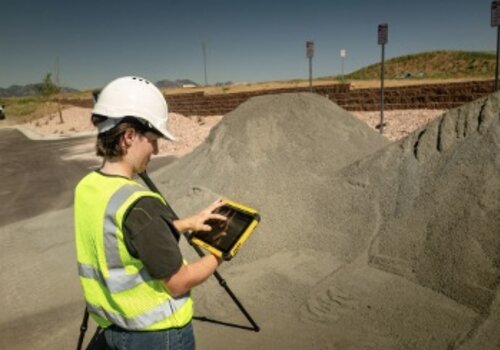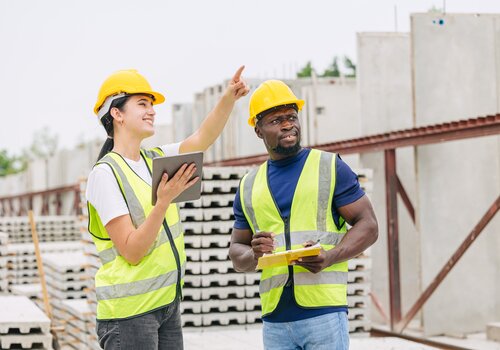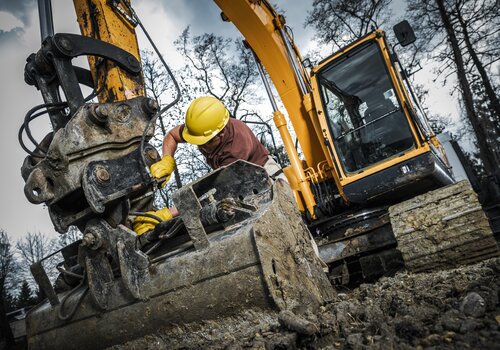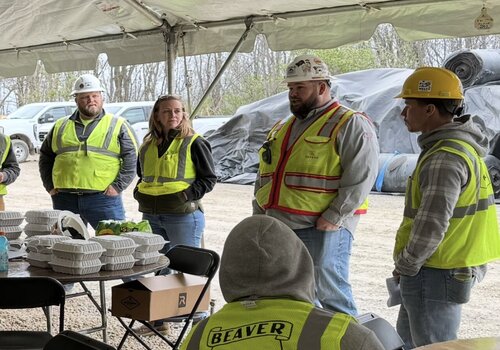The construction industry is heading into 2026 with a powerful mix of opportunity and challenge. Projects are getting bigger and timelines are getting tighter. The pressure to deliver on time and on budget has never been higher. Trimble’s latest Industry Outlook for 2026 paints a picture of an industry being reshaped by technology from artificial intelligence to automation and outlines how contractors can stay ahead of the curve.
Here’s what’s coming and how you can prepare.
1. THE DATA CENTER BOOM ISN’T SLOWING DOWN
If it feels like data centers are springing up everywhere, you’re not wrong. These projects continue to outpace traditional construction.
“Data center development will continue to outpace traditional construction,” says Duane Gleason, Industry Workflow Principal at Trimble. “The challenge for builders is coordination and confidence.”
2. AI TAKES THE NEXT LEAP
Artificial intelligence has already changed how contractors estimate, plan and monitor projects. But 2026 will be the year it goes fully agentic.
AI will start working with you, not just for you. When that happens, AI can connect the dots across every phase of a project, cutting waste and freeing professionals to focus on strategy and decision-making instead of repetitive tasks.
“We’ll see a rise in AI systems that can observe, plan, reason and make decisions,” explains Aviad Almagor, Trimble’s Vice President of Technology Innovation.
3. TECH AND TRAINING WILL SHAPE THE NEXT-GEN WORKFORCE
There’s no escaping it; the industry needs people. Nearly half a million new workers will be needed in 2026 alone to meet demand.
Training will also evolve. The most successful programs will blend hands-on field experience with technology-driven education like simulations and AR/VR.
The bottom line: the companies that modernize their tech stack and invest in people will win both projects and talent.
4. SUBSCRIPTION MODELS MAKE ADVANCED TECH ACCESSIBLE
For many contractors, cost has been the biggest hurdle to adopting new technology. That’s changing quickly.
In 2026, subscription-based software and hardware models will mature, offering flexibility, scalability and lower upfront costs.
Expect improved cloud security, continuous updates and personalized support as standard. Subscription models will also help standardize technology use across crews and sites, ensuring everyone has access to the most current tools.
5. Reality Capture Goes Mainstream
Reality capture is no longer reserved for mega-projects or high-tech firms; it’s becoming a daily tool for contractors of all sizes.
“In 2026, user-friendly tools will enable even more comprehensive data collection,” says Arnaud Lezennec, Senior Applications Engineer at Trimble.
This data can be shared instantly via the cloud, enabling real-time collaboration, visual progress tracking and rapid issue detection. When combined with AI and machine learning, reality capture becomes a universal visual language helping everyone from project owners to subs stay aligned.
6. AUTOMATION AND AUTONOMY KEEP MOVING FORWARD
A fully automated construction site isn’t arriving overnight but it is getting closer every day.
“The path to autonomy is an evolution more than a revolution,” says Ian Welch, Director of Engineering for Trimble’s Civil Construction Field Systems.
Machine control is rapidly becoming standard, and automation will soon extend beyond equipment optimizing tasks, workflows and even crew deployment.
7. THE RISE OF COMMON DATA ENVIRONMENTS
By now, most contractors realize they’re sitting on mountains of untapped data. Common data environments (CDEs) are how you finally put it to work.
CDEs bring together design, engineering, fabrication, construction and maintenance data into a single secure hub. By serving as a centralized “source of truth,” these platforms improve visibility across project phases and enable faster, more informed decision-making.
These unified systems also pave the way for digital twins, virtual models that mirror real-world assets to bridge the gap between construction and long-term operations.
8. SMARTER INFRASTRUCTURE THROUGH GIS AND AI
From highways to utilities, asset owners are facing mounting pressure to maintain aging infrastructure while managing new projects. GIS-centric asset lifecycle management (ALM) is emerging as the solution.
“Up to 75 percent of an asset’s total cost comes after construction,” notes Chris Bell, Trimble’s VP of AECO Industry Strategy & Product Marketing. “GIS data and AI insights make it possible to shift from reactive to predictive maintenance cutting costs by as much as 40 percent.”
9. TECHNOLOGY BECOMES EASIER (AND MORE AFFORDABLE) FOR ALL
The digital divide between large and small contractors is closing fast. Subscription pricing, simplified interfaces and e commerce purchasing options are lowering the barrier to entry. That accessibility will help democratize innovation, allowing even smaller firms to compete on a level playing field.
“Improvements in operability and user experience mean smaller companies can adopt technology without heavy IT infrastructure,” says Doug Seyler, Trimble’s VP of Implementation and Customer Success.
10. FINANCE AND FIELD DATA FINALLY CONNECT
The construction industry is also rethinking how it manages money. Delays, overruns and inefficiencies often stem from poor communication between the field and the back office.
That’s changing with new enterprise resource planning (ERP) platforms designed specifically for contractors.
“These systems integrate accounting, HR, timekeeping and performance tracking,” says Jon Fingland, Trimble’s VP and Category Manager for Finance and Operations. “It’s about better control over budgets, cash flow and job costs, especially as material prices and tariffs fluctuate.”
THE BIG PICTURE
Trimble’s 2026 Outlook makes one thing clear: technology is no longer optional, it’s foundational. From AI and automation to training and data sharing, the industry’s future will belong to contractors who see technology not as a cost, but as a tool for confidence, connection, and control.
As the pace of construction accelerates, those who embrace this digital transformation will be ready not just to keep up, but to lead.
Visit Trimble’s booth (West Hall — W40420) at CONEXPO-CON/AGG 2026 to see how to connect the physical and digital worlds in construction. Register today.
Photo credit: TRIMBLE












